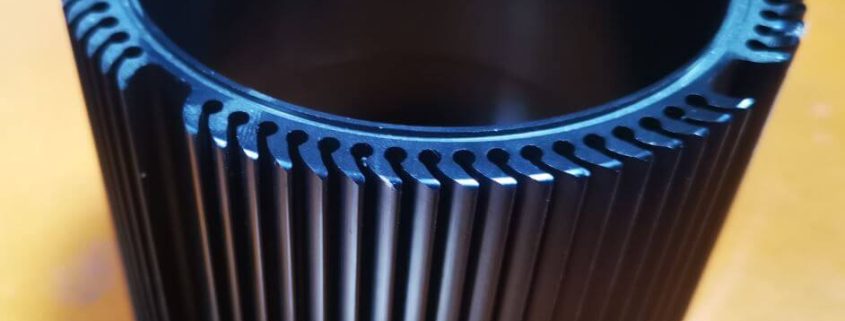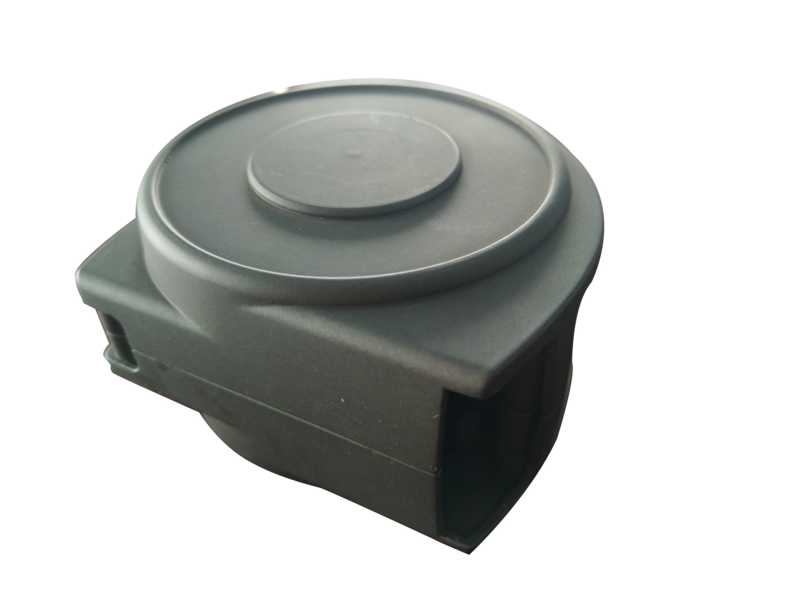
We offer powder coating Painting, Anodizing surface finishing for all of aluminum die casting. anodizing aluminum profile.
Anodizing is a simple electrochemical process that forms a protective coating of aluminum oxide on the surface of the aluminum die casting parts. The rusting of unprotected iron in the presence of air and ater is then inevitable because it is driven by an electrochemical process. The lifetime of the finish is proportional to the thickness of the anodic coating applied.
This process has been in vogue since fifty years. Aluminum oxide, as we all know, is a hard, durable and weather resistant substance that protects the base metal. The coating may be either colored by dyeing or it may exhibit bronze tones through diffraction phenomena produced by the coating. he coating is integral to the metal and will not peel or flake. In general anodizing is less expensive than painting with the exception of coil painted products.
Anodizing is particularly preferred for aluminium die casting in high traffic areas where the coating is subject to physical abuse and abrasive cleaners
Anodizing cannot peel off as the coating is actually part of the metal. Anodizing gives aluminum a deeper, richer metallic appearance than otherwise possible. Further, computerized color matching with quantitative, objective color data is now possible. Anodizing is the ideal method for the present day environmental concerns. Though more research needs to be done to determine the total environmental impact of different aluminum finishes, it is evident that anodizing does far less damage. During 1988 the Aluminum Anodizer Council was formed to create and spread awareness about the benefits of anodizing.
The paint manufacturers, driven by selfish interests, were comparing excellent paint to poor anodizing to ward off competition from anodizers. Anodizing which is improperly sealed has poor chemical resistance. Brand new anodizing with a thin coating thickness is nearly identical in appearance to an Aluminum Association Class I anodized finish. Very thin anodized coatings are unsuitable for use on exterior curtain wall or metal roofing. The one distinct advantage of a thicker anodic coating is its durability and longer life. It must be noted that anodized surfaces, like other building components, must be protected from acidic attack during construction activity.
The one demerit may be that after lapse of some years, the anodized surfaces may accumulate dirt and stains that look similar to chalking paint. This chalk can however be removed with a mild detergent combined with an abrasive cleaning technique. A small amount of the upper anodic coating can actually be removed, leaving behind a renewed anodized finish which can last for another few years. This is why anodizers claim that their product is capable of renewal. This method of cleaning often results in a renewed appearance whenever an anodized coating loses effect. Anodizing is ideally suited to storefronts, and wherever a rich metallic appearance is preferred.
Anodized, PVDF and Polyester coatings could all be used on curtain wall, roofing and storefront applications with excellent results. Polyester coatings are formed with unsaturated polyester resins dissolved in styrene. The styrene performs the function of the solvent, with the capacity to respond with the resin and, in the process, contribute to the total solid content. The anodizing chemicals include Cleaning Chemicals, Pre Treatment Chemicals, Anodizing Chemicals, Coloring Chemicals, Electro Coloring and Immersion Coloring and Sealing Chemicals.
There are many options available for finishing aluminum which is why it is such a popular construction material. The question of which finish to apply is not an easy decision because of many options available. With environmental preservation being the crying need of many new developments, there may soon be further options to the already existing range of finishes available for aluminum.
Advantages of Anodizing:
- In general anodizing is less costly than painting with the exception of coil painted products.
- Anodizing is harder than PVDF. Anodizing is superior for aluminum in high traffic areas where the coating is subject to physical abuse and abrasive cleaners.
- Anodizing cannot peel off. The coating is really part of the aluminum casting or metal.
- Anodizing gives aluminum die casting a deeper, richer metallic appearance than is possible with organic coatings. This is because an anodized coating is translucent, and one can see the bottom metal underneath the coating. This translucence contributes to color variation problems, but anodizers are doing a much better job of controlling the amount of color variation than in the past. Computerized color matching with quantitative, objective color data is now possible.
- Anodizing is unchanged by sunlight. All organic coatings will eventually fail due to revelation to ultra-violet light.
Disadvantages of anodizing
While anodizing offers numerous advantages, it’s important to consider potential disadvantages and limitations associated with the process:
- Cost: Anodizing can be more expensive compared to other surface finishing techniques. The process requires specialized equipment, chemicals, and skilled labor, which can contribute to higher production costs.
- Limited Color Range: Although anodizing allows for a range of color options through dyeing, the color choices are generally limited compared to other coating methods such as powder coating or painting. Achieving certain shades or complex color patterns may be challenging.
- Surface Uniformity: Achieving a completely uniform anodized surface can be difficult, especially on complex or intricate die cast aluminum components. Variations in current density, surface geometry, or masking techniques may result in uneven coating thickness or color variation.
- Dimensional Changes: Anodizing involves the build-up of the anodized layer on the surface of the aluminum, which can result in dimensional changes. This increase in surface thickness needs to be carefully considered in applications where tight tolerances or precise fitment is critical.
- Substrate Limitations: Not all aluminum alloys are suitable for anodizing. Some alloys may have poor response to the anodizing process, leading to inconsistent or unsatisfactory results. It is essential to select the appropriate alloy with compatible anodizing characteristics.
- Brittle Coating: While anodizing increases the surface hardness of aluminum, the resulting anodized layer can be relatively brittle compared to the underlying metal. Excessive mechanical stress or impact on the coated surface may cause cracking or chipping of the anodized layer.
- Limited Repair Options: Unlike some other surface finishes, repairing damaged or scratched anodized surfaces can be challenging. It often requires stripping the entire anodized layer and redoing the anodizing process, which can be time-consuming and costly.
- Environmental Considerations: Anodizing involves the use of chemicals, such as acids and dyes, which require proper handling and disposal to minimize environmental impact. Adhering to environmental regulations and implementing appropriate waste management practices is crucial.
While these disadvantages exist, anodizing remains a widely utilized surface finishing process for die cast aluminum due to its overall benefits and versatility. Careful consideration of specific requirements and limitations can help manufacturers make informed decisions about incorporating anodizing into their production processes.
Applications of anodizing products
Anodizing products find wide-ranging applications across various industries due to their unique properties and advantages. Some of the key applications of anodizing products are:
- Architecture and Construction: Anodized aluminum is commonly used in architectural projects for applications such as window frames, doors, curtain walls, and exterior cladding. The corrosion resistance, durability, and ability to achieve custom colors and finishes make anodized aluminum an ideal choice for enhancing the aesthetics and longevity of buildings.
- Automotive and Transportation: Anodized aluminum components are extensively used in the automotive and transportation industry. These include parts such as trim, grilles, wheels, engine components, and interior accents. Anodizing provides corrosion resistance, wear resistance, and the ability to achieve decorative finishes, contributing to both the aesthetic appeal and durability of automotive products.
- Aerospace and Aviation: Anodizing plays a critical role in the aerospace and aviation industry. Anodized aluminum is used in various aircraft components, including structural elements, aircraft interiors, and aerospace equipment. The protective anodized layer enhances corrosion resistance, improves wear resistance, and contributes to weight reduction, making it suitable for aerospace applications.
- Electronics and Electrical Industry: Anodized aluminum is widely used in the electronics and electrical industry due to its electrical insulation properties. It is utilized in components such as heat sinks, enclosures, connectors, and printed circuit boards (PCBs). The anodized layer provides protection against corrosion, enhances heat dissipation, and improves the overall performance and reliability of electronic and electrical devices.
- Consumer Goods: Anodizing products find applications in a wide range of consumer goods, including smartphones, laptops, tablets, cameras, and household appliances. Anodized aluminum offers durability, scratch resistance, and the ability to achieve attractive colors and finishes, enhancing the aesthetic appeal and longevity of consumer products.
- Medical Equipment: Anodized aluminum is commonly used in the manufacturing of medical equipment and devices. Its corrosion resistance, biocompatibility, and easy sterilization make it suitable for applications such as surgical instruments, implant components, diagnostic equipment, and hospital furniture.
- Sporting Goods and Outdoor Equipment: Anodized cast aluminum is favored in the sporting goods industry for its lightweight, corrosion-resistant, and durable properties. It is used in the production of bicycles, golf clubs, fishing reels, camping equipment, and other outdoor gear, providing strength, aesthetics, and resistance to harsh environmental conditions.
- Industrial and Machinery: Anodizing is widely utilized in industrial and machinery applications. Anodized aluminum components can be found in hydraulic systems, pumps, valves, machine frames, and various industrial equipment. The protective anodized layer enhances corrosion resistance, wear resistance, and overall durability in demanding industrial environments.
These are just a few examples of the diverse applications of anodizing products. The versatility, durability, corrosion resistance, and customizable aesthetic options offered by anodized aluminum make it a preferred choice in numerous industries where high-performance surface finishes are required.
- magnesium die casting
- Magnesium die Casting
- magnesium die casting manufacturers





